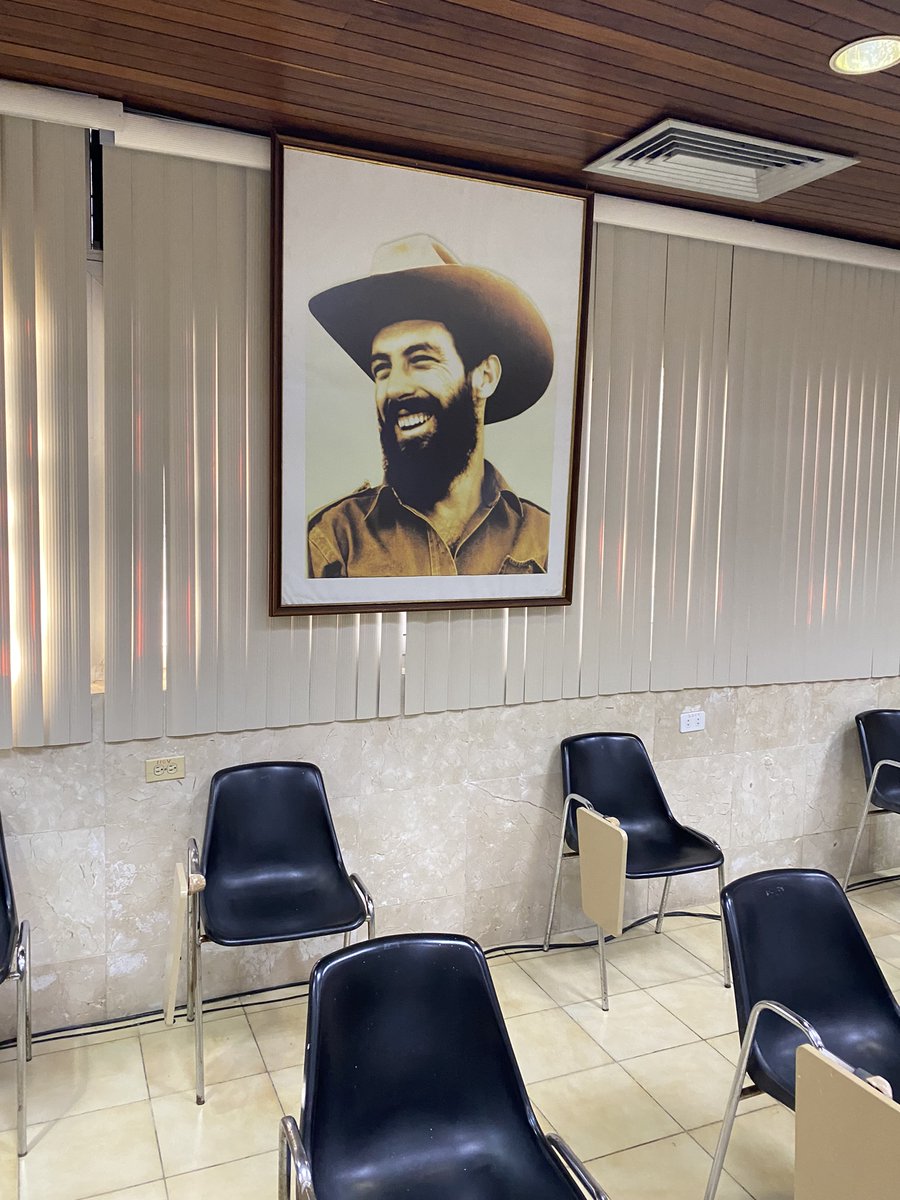
1/ I just got back from from a five-day trip to #Havana #Cuba. You’ll see some future reporting on my trip @YahooFinance in come days
Here’s a preview 👇
Here’s a preview 👇

2/ I went with a group from the Global Interdependence Center @Interdependence led by @DavidKotokGIC of @CumberlandADV. Goal was to learn if better US~Cuba relations are possible, including trade. Takeaways ~
4/ A couple of visual examples. Here are two oceanfront properties on the Malecón esplanade in Havana, basically next to each other. One’s a well-maintained deco-style hotel, the other’s a crumbling building that looks like it was bombed. 



6/ Here’s a clip of dancers at the Lizt Alfonso Dance Company ...
8/ There are wrecked buildings all over Havana. A local architect told us three houses collapse every day in the city, on average. This is from the stark shortage of construction materials and many other things, caused mainly by US sanctions. 

9/ In a pre-brief, my corporate security folks told me the biggest risk to visitors in Cuba is crumbling infrastructure. This is what they mean. Again, this is the oceanfront esplanade. 



10/ Quiz: What’s missing in this picture? What do you normally see in the water around most Caribbean islands? 

11/ Answer: Boats. The Cuban government licenses very few boats, since they could split for the US or smuggle or run drugs. One result: There’s very little local seafood. On a run I did come across this marina, but no boats were out. 

12/ Here's what a run along the Malecón looks like when you're not falling into a hole
13/ We met with senior government officials at four different ministries. In general, they seemed smart and well-informed. Some laughed easily and made jokes. Most of them ripped US sanctions and said they’re causing terrible hardship for ordinary Cubans.
14/ Yet they also generally defended and praised Cuba’s socialist economy and insisted there was a plan to fix much of this by 2030. Our capitalist-minded group was very skeptical. 

15/ One local said, “I hear these ministers talk about how they’re going to fix everything, but then we can barely get food.”
16/ Here’s a line for food. They’re all over Havana. Inside, it's not aisles filled with products. It's a counter where you receive your allotted provisions. 

17/ Catty-corner from that food line is a line for gas. We asked a taxi driver why there’s a line. “There is no gas,” he said. 

18/ The price of gas in Cuba is around $3/gallon equivalent. The retail price never changes. But instead of rising prices, when gas gets scarce, there’s simply no gas—except on the black market where it can cost 5x or more the govt price.
19/ I took a lot of these pictures on runs around Havana. Most people say Cuba is safe, and it does seem so. Here’s a video of a kid near the Malecón esplanade doing a flip in a dirt yard.
20/ Of course you see old ‘40s and ‘50s-era US cars all around Havana, from before the revolution. It seems nostalgic, but it’s really from necessity, since they can’t get/afford more modern cars. We rode in a few well-preserved ones. 

21/ Many of those old Fords and Chevys now have engine parts from Russian Ladas (also seen everywhere). Some owners have replaced old US V-8s with diesel engines from Russian trucks. Many of these old cars break down. 

23/ Tourist visits to Cuba plummeted during Covid and they’re still way down. That’s really hurting Cuba. This fancy hotel is practically empty. 

24/ Despite many problems and barriers, entrepreneurs are still building businesses in Cuba. We met a few. A woman named Lauren Fajardo runs this store, the Dador clothing shop ~ wearedador.com 

25/ There are private businesses in Cuba but running one requires buying wholesale material in cash, paying sky-high taxes and hoping the govt doesn’t change the rules and take your business. It's amazing that talented people do it, given that they are free to leave Cuba.
26/ Some of these difficulties, Cuba imposes on itself, since socialist governments never breed prosperity. Other hardships date to the US embargo that President Kennedy first imposed in 1962.
27/ Obama began to ease US sanctions on Cuba in 2015. Cubans rejoiced and many Cubans living elsewhere returned to take part in a Cuban revival. 

28/ Trump reversed the Obama moves, cutting Cuba off all over again. Despair in Cuba.
29/ There’s a new flood of Cuban migrants to the US, and giving Cubans more reasons to stay in Cuba would ease Biden’s political difficulties on migration. There have been a few small changes.
30/ But hard-core anti-Castro Cuban-Americans, mostly in Florida, have the political power to block most changes in US Cuba policy. @marcorubio helms this group. 

31/ Cuban policymakers told us they hear from many US politicians and businesspeople who would like to see more openness—and trade—between the US and Cuba. Problem: There’s little political muscle on that side in the US.
32/ Part of the debate is whether more openness would directly benefit ordinary Cubans and perhaps lead to more freedoms, or mainly benefit the ruling socialist government. Share your thoughts!
/END
/END

• • •
Missing some Tweet in this thread? You can try to
force a refresh








